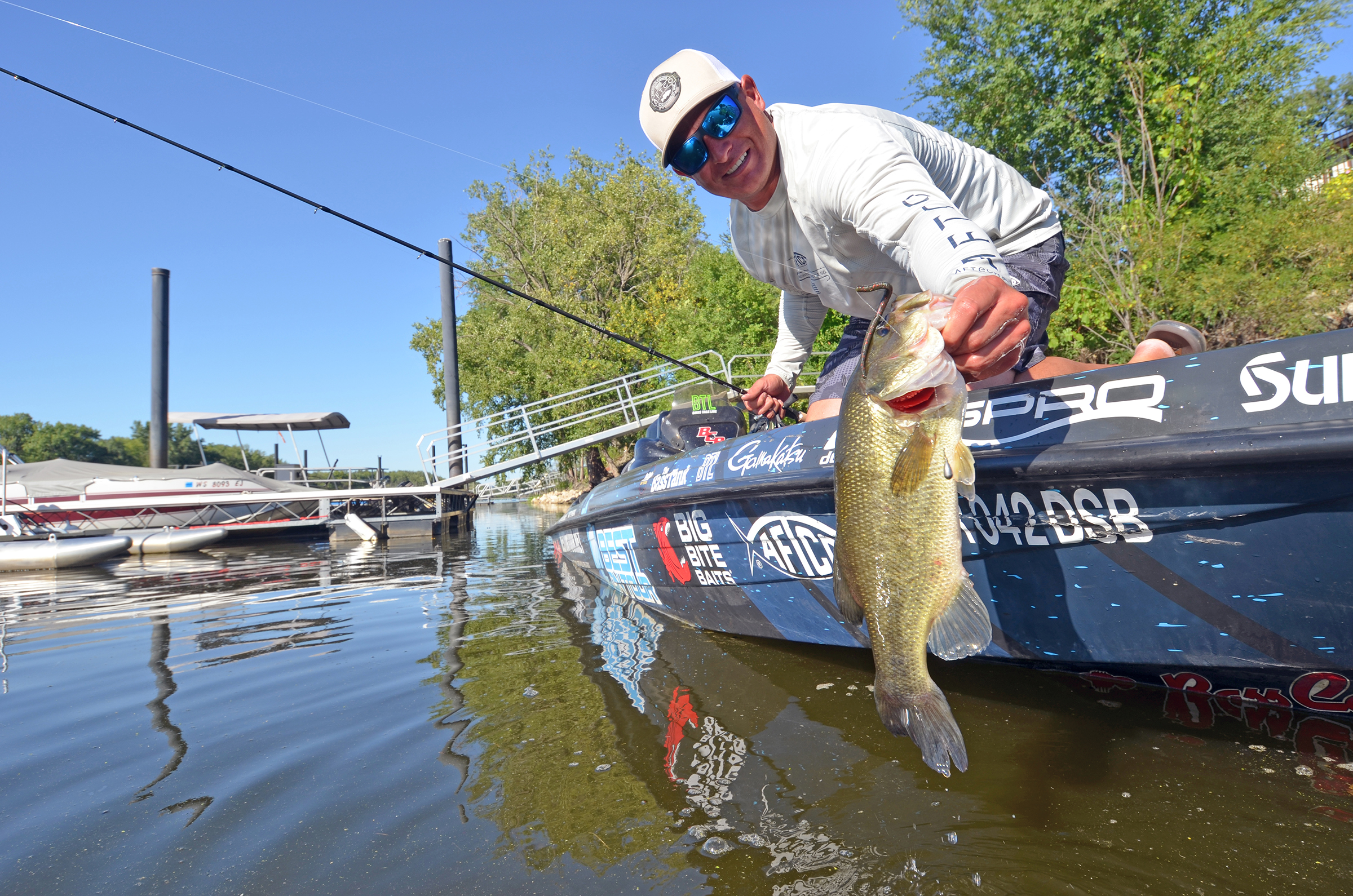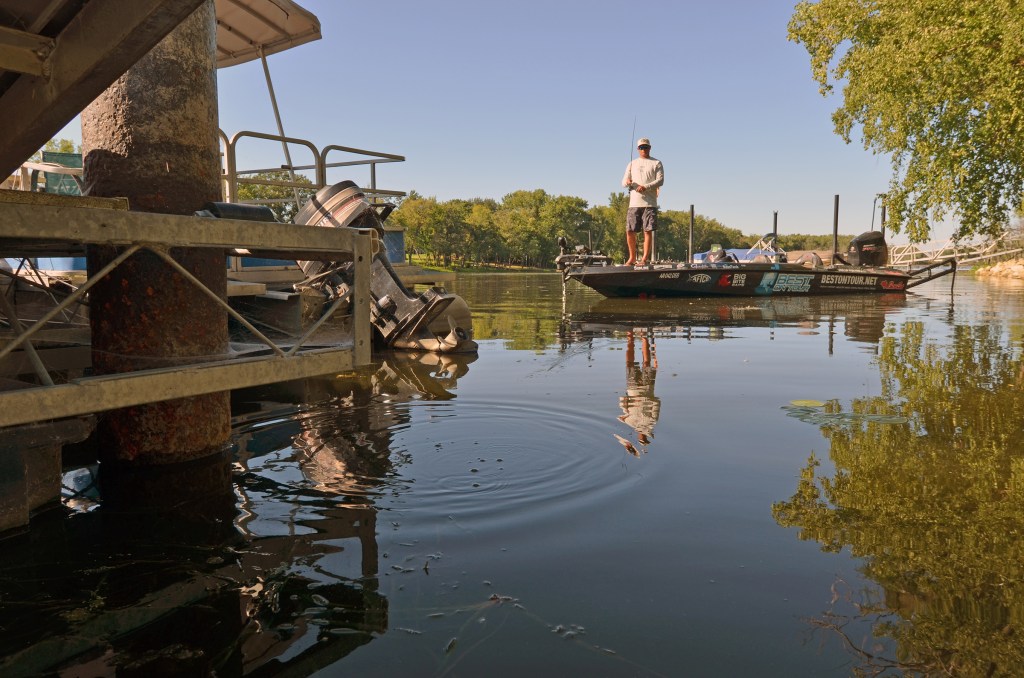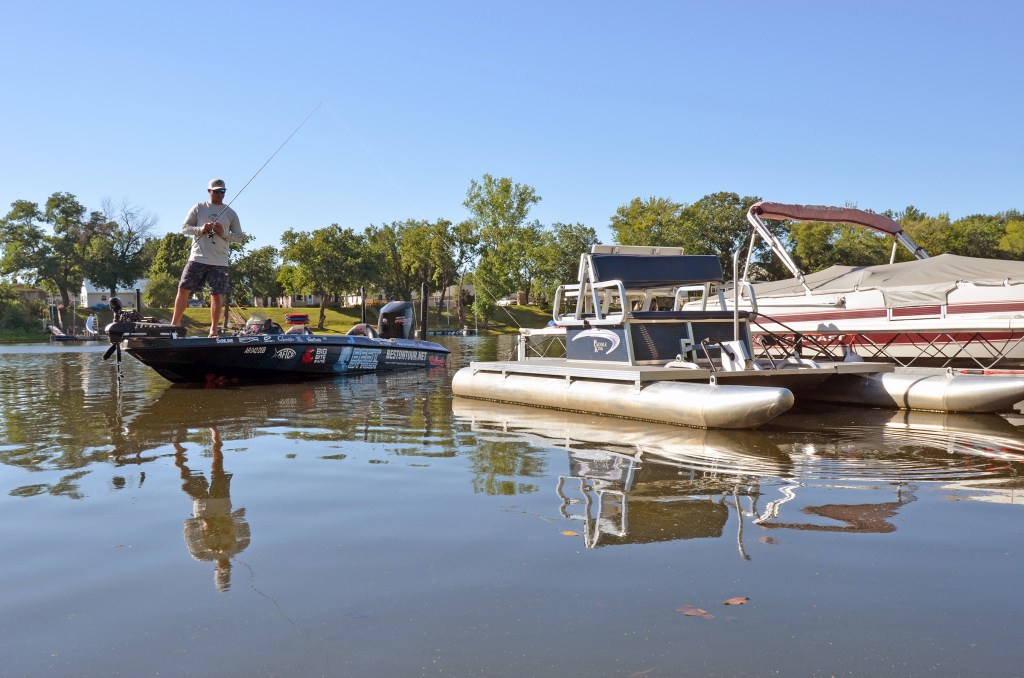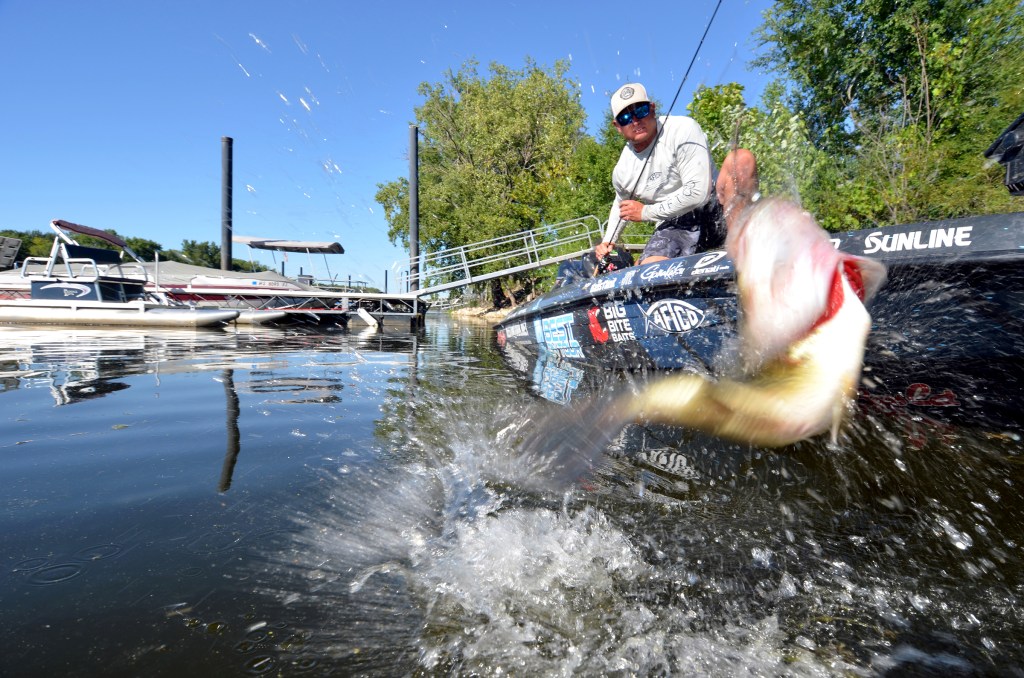
Most anglers rig a drop shot with a 12-inch or longer drop line from the hook to the sinker. Oklahoman Matt Pangrac, who will be fishing all nine Bassmaster Opens for the second time in 2023, has found that a 4- to 6-inch drop line is more productive in certain situations.
One of those situations is when fishing a tidal river, such as the James River, where razor sharp barnacles cling to cypress knees and other hard objects that attract and hold bass. When the line is knotted directly to the bait, as with a Texas rig, the barnacles often slice through the line before you can extract the bass from the cover.
Pangrac drastically reduces this megaflop by pitching a short drop shot to the cover. The short drop line holds his bait, typically a Texas-rigged worm, above the barnacles while keeping it close to the cover where it can tempt a bass.
“The main line stays clean,” Pangrac said. “When the tide is moving, the current gives a lifelike action to the worm as it hangs there in a bass’ face.”
When dealing with barnacles, Pangrac rigs his drop shot with 14-pound Sunline Shooter Fluorocarbon. In most other situations, he pitches a short drop shot with 10-pound fluorocarbon, knotted to Sunline SX1 Hi-Vis Yellow braid matched with a 7-foot, 4-inch, Denali Lithium Pro medium-heavy spinning rod and a Denali Fusion Pro reel.

“I primarily use a 3/8-ounce Denali Kovert Tungsten drop-shot weight, which is heavy enough for accurate pitches,” Pangrac said. “I’ll downsize to 1/4 ounce if the bottom is soft, if the bass are hitting the bait on the fall or when I’m fishing extremely shallow water.”
His go-to worms are Big Bite’s 5-inch Scentsation Cliff Hanger and 4.5- and 6-inch Shaking Squirrel. He Texas rigs them on a 2/0 straight shank Gamakatsu G-Finesse Worm Light Hook.
A short drop shot also comes through for Pangrac when he’s pitching under boat docks that leave a small opening between the dock and the water. This tactic helped him finish in 11th place at a Central Open on Neely Henry in 2020. He could not have gotten under those docks with a longer drop line.
“A short drop shot lets you get under low docks where bass don’t often see a bait suspended above the bottom,” Pangrac said.

Even when he sees bass on offshore structure with live forward-facing sonar, Pangrac believes that a bait presented on a short drop shot better mimics baitfish that swim near the bottom. He has found that when bass follow the bait down, they are more likely to nab it.
“Sometimes it’s more of a reaction bite than we give it credit for,” Pangrac said. “They get it right after the weight hits bottom or as soon as you start shaking it.”
The short drop-shot rig has pretty much replaced the Ned rig and a shaky head in Pangrac’s finesse arsenal. It is faster and more efficient, the tungsten weight provides superb bottom feedback and the rig suffers fewer break-offs when fishing rocky bottoms, Pangrac stressed.
“It’s dynamite on bed fish too,” Pangrac added. “I pitch that 3/8-ounce weight in the bed and the bait stays 4- to 6-inches above the eggs. I can dead stick it or shake it on a slack line.”
He frequently opts for a pink worm when bed fishing so he can better see when a bass engulfs the bait. In most other situations he goes with more natural green pumpkin and baitfish hues.






